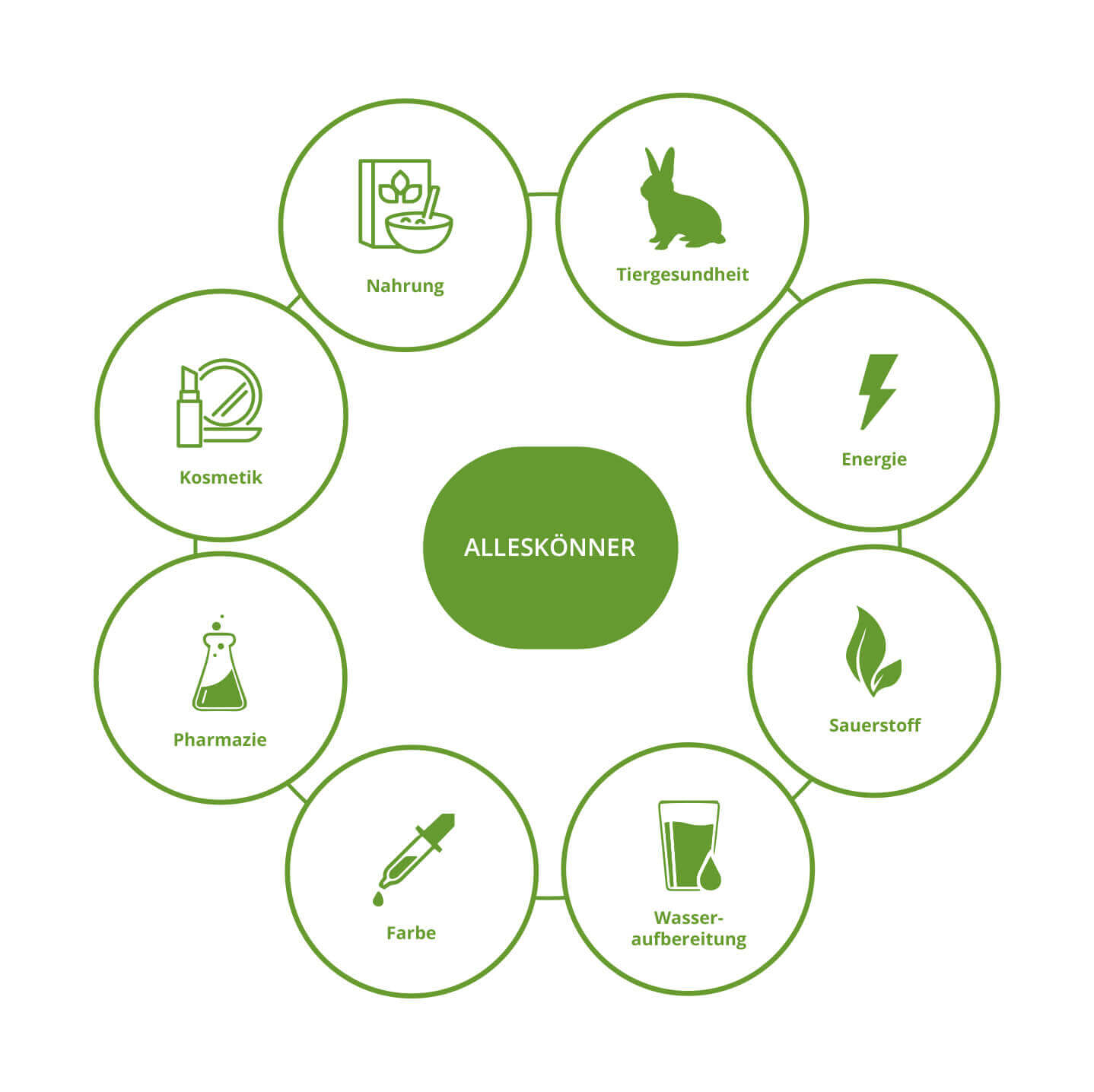Power packs. All-rounders. Survival artists.
Photosynthesis in its perfection


Algae. Wonderful all-rounders.

How algae save the world?
Find out more in this ARTE documentary:
Learn more about the all-rounder algae
Astaxanthin belongs to the carotenoids and is used as a natural red colourant for a wide variety of products in cosmetics or in the food industry.
Astaxanthin is mainly extracted from the algae Haematococcus pluvialis. The interesting thing about this type of algae is that it is initially green and is then exposed to an environmental change that leads to the production of astaxanthin. This change can be observed with the naked eye. The colour of salmon, for example, can also be traced back to the ingestion of astaxanthin.
Macroalgae in particular have been used in cosmetics for a long time; they are mainly used in spa and wellness treatments for algae wraps and face masks or for a wide variety of care products. In recent years, microalgae have also increasingly become the focus of the cosmetics industry because of their valuable ingredients and the increasing demand for natural and sustainable raw materials. Especially as antioxidants, the various pigments of algae are suitable for use in cosmetics. They can help reduce cell stress and slow down skin ageing. In this context, long-chain sugars (polysaccharides) are also gaining in importance; they are formed by some algae and used as moisturisers in cosmetics.
Besides the use of algae in food and cosmetics, algae are also present in the energy and fuel industry. In the course of the oil price crisis of the 1970s, many research projects were launched to establish algae as an energy source. This was only partially successful, as the price of biofuel or energy from algae is still not competitive today. Research is still being conducted into more efficient and cheaper production processes in order to be competitive in the energy sector in the future. It is assumed that this form of energy will only become a real alternative in a few years.



 DE
DE